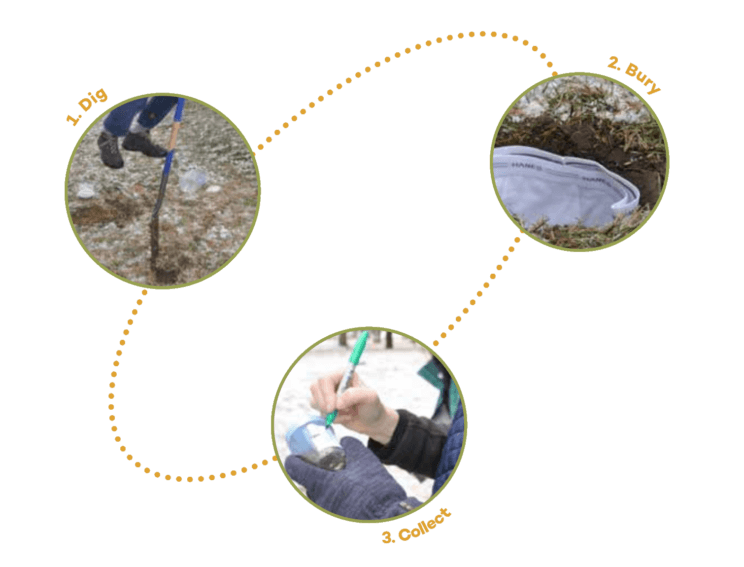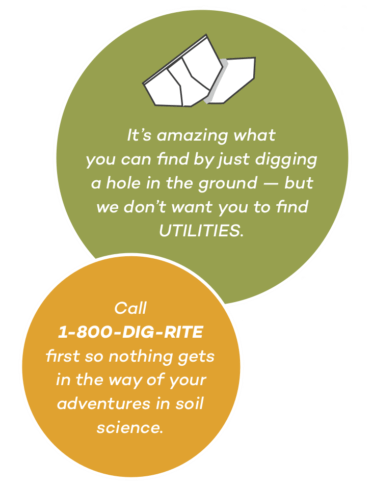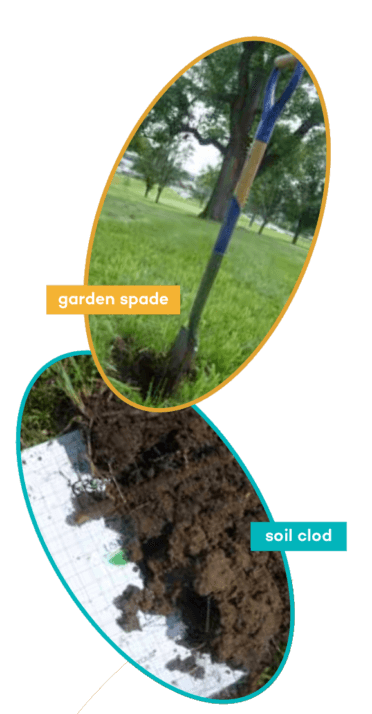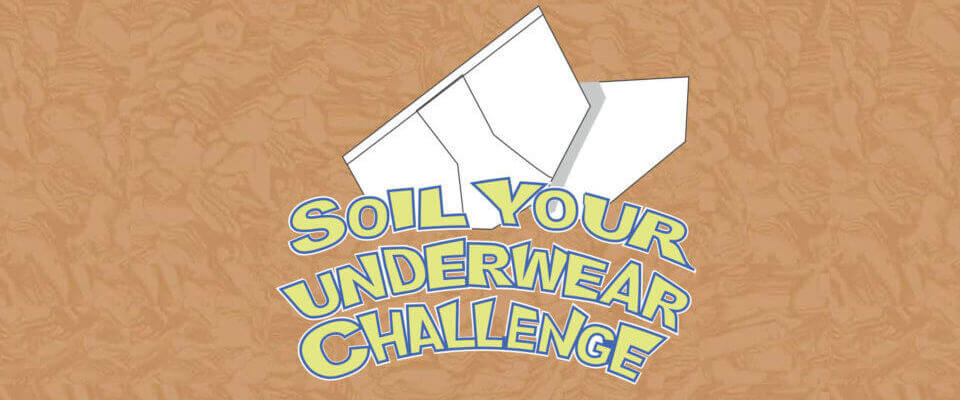Underwear Burial
What will the soil do to your underwear?
ACTIVITY DESCRIPTION
As you bury 2 pairs of underwear, you’ll uncover diverse life underground and discover how soil changes the deeper you dig. Underwear Burial is a jumping off point to other activities in this book.
This activity also guides you through the procedures scientists take to ensure their field studies are rigorous. These include making thoughtful site selections, eliminating human bias, and observing natural processes.
MATERIALS
- The Experiment Station
- 2 Pair of cotton underwear
- Landscape flags
- Hand trowel
- Garden spade
- 3 Specimen jars
- Roll of masking tape
- Felt-tipped permanent marker
- Camera or smart phone


PROCEDURES
1. Select A Site.
Pick one of these three landscapes:
- Garden plot or area of flat lawn with >95% sun exposure
- Bottom of a wooded hillside (sloped land with water ponding at the base)
- Urbanized soil (an area with a high percentage of concrete relative to vegetation)
When you select a field site drop a GPS pin (such as in Google Maps). Record your location as if you’re a pirate burying treasure: i.e., ‘Underwear is buried 10 paces from the tall tree.’
2. Observe And Record.
Sit quietly and observe the wildlife, insects, and people at your site. Record what you see. Note the plants growing around you. Think about how the soils support the life you observe.
What kinds of plants are growing there? How might the soils support the life around you? Write and sketch your observations.
3. Share your data
Use a notebook to record your observations and take a photo of your site. Share your GPS coordinates, photos, and observations with the community of others participating in the Saint Louis Science Center Soil Your Underwear Challenge at slsc.org/soil-your-underwear.
4. Determine Digging Locations.
You will dig two different holes. In each, you’ll bury one pair of underwear, and you’ll sample soil. The first will be shallow (6cm); the next will be deeper (34cm).
But first, you’ll want to eliminate human bias as you determine where to dig. This is called “random sampling” — an important part of the scientific process. To do this, label the elastic band of one pair of underwear with an “A” and the other with a “B.” Close your eyes and throw one pair in the air, then the other. Wherever they land determines where you will dig. Now flip a coin to determine whether “A” or “B” will be placed in your shallow dig (6cm).
5. Dig Two Holes.
With your burial areas assigned, use a heavy-duty garden spade to dig the first hole. Make each hole approximately 30cm wide.
It is very important to keep the soil clod (the solid mass your shovel pulls up) intact. As you excavate the soil clod, lay the material on your Experiment Station sheet, doing your best to keep the clod in sequential order from top to bottom.
You may notice critters, roots, and even fungal mycelium as you dig. Note the depth where you see these things. As you dig you may also want to note how the soil color changes.
What do you think causes the dark, light, and red hues? Check out Activity 6 for more on soil color
 6. Collect Soil Samples.(Optional: For use in Activities 2 and 4)
6. Collect Soil Samples.(Optional: For use in Activities 2 and 4)
After your soil clod for “A” is on your Experiment Station sheet, you can collect your soil samples. Soil samples will be collected from the excavated soil at your “A” location only.
Using a felt-tipped marker label three 100ml specimen jars with these measurements: 6cm, 16cm, and 26cm. These are the depths to sample from. Use your trowel to scoop up soil at each of these depths, then use the ruler on your Experiment Station sheet to measure them. Fill the specimen jars but DO NOT pack down the soil into the containers.
If possible, store soil samples in a refrigerator (5°C). If this is not possible, then perform the Seed Germination Assay (if you plan to do this) within two days from the sample date.
7. Bury Your Underwear
Lay the underwear flat with the elastic band flush against the top of the soil (Fig. 2). Cover the underwear with the soil you excavated from the hole. Keep the soil loose as you bury it: compacting it will reduce the accuracy of this experiment. To remember where you buried your underwear make sure your landscape flag is firmly placed.
8. Maintain The Site And Make Observations.
Make 10–20-minute site observations every two weeks. If you really get into this, you might consider adding a rain gauge and thermometer to measure the environmental conditions at your area. Take photos during your site visits. Leave the underwear buried for 60 days. Then, dig up your underwear and share your results with the Saint Louis Science Center.
Download and print the worksheet to record your findings!








